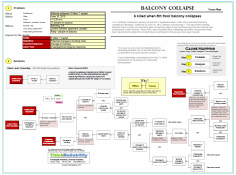The human body is a pretty amazing thing. Many of the processes that take place in our body on a regular basis – keeping us breathing, walking and playing video games or skydiving (or both, though hopefully not at the same time) – have not yet been replicated. They’re that complex.

If your goal for your body is to feel well and behave pretty consistently, then drinking alcohol is going to impact those goals. First, drinking is going to result in a decrease in control of your behavior. The specifics of how this manifest are legion, but I am assured you probably have many examples. Your post-binge feelings are also going to be impacted: most likely your drinking is going to result in a hangover (generally awful feelings centered around your abdomen and head), dehydration and frequent urination. If your goal is not to eat everything in sight without any consideration about what it will do to your waistline, then your diet may also be impacted due to a desire for carbohydrates.
Beginning with one of these goals, we can ask our favorite question: Why? For example, our decrease in behavior control results from the hypothalamus, pituitary gland, and cerebellum being depressed. This decreases inhibitions, ability to think clearly and also releases a whole slew of hormones and dopamine. Additionally, alcohol impacts neurotransmitters which direct emotions, actions and motor skills, so the combination may make you think you can dance on a table . . . but really you can barely walk.
Now about the ill after-effects. That lovely hangover results from your digestive system attempting to detoxify your body from alcohol and the pounding headache caused by dehydration. When your digestive system works to remove alcohol, the byproduct is acetaldehyde and your body doesn’t like it at all. Most of the alcohol from your body is going to be flushed through your bladder. In order to speed its exit, your body redirects all the liquid it can to your bladder, leaving you dehydrated. (That’s also why you have to run the bathroom so many times after drinking.) The whole process of removing alcohol from your body takes energy. In order to direct as much energy towards alcohol removal as possible, your brain shuts down most of your other functions (which doesn’t help with the ability to function). To get that energy back, your body craves food – carbs in particular (grease optional).
With all these bad effects, you may wonder why people drink at all. Well, when you drink, the alcohol depresses some systems as discussed above, resulting in the release of a bunch of hormones and dopamine. These make us feel good (or even fabulous!). That’s why we keep drinking. (There’s also a whole bunch of social pressures which I’m not going to go into here.)
Giving up drinking altogether is difficult, and many people don’t want to. There are, however, ways to minimize the ill effects of drinking. Food in your stomach helps absorb some of the alcohol, so eating before you drink can help. The headache portion of the hangover can be minimized by drinking a lot of water (though that won’t help with the frequent urination issue). AND OF COURSE, drinking does a number on your fine motor control and general behavior, you should never, ever drink and drive or operate other heavy machinery.
To view the Cause Map of what happens when you drink, click on “Download PDF” above. The information used to create this blog is from:
“The Science of Getting Drunk” and
“Every Time You Get Drunk This Is What Happens To Your Body And Your Brain“







